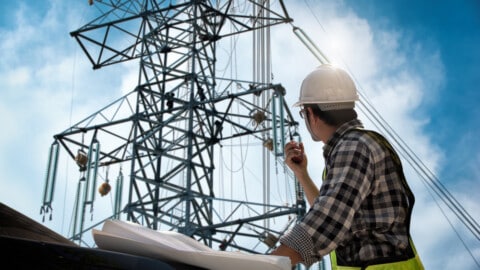The Australian Renewable Energy Agency (ARENA) has announced $15 million in funding for Evie Networks to roll out the largest electric vehicle (EV) battery charging network along Australian’s highways.
The funding will support the first phase of the $50.2 million intercity highway charging network with 350kW ultra-fast chargers located along the ‘National Land Transport Network’ and beyond.
A total of 42 charging sites, all powered by renewable energy, will be installed at roadside service centres connecting Adelaide, Melbourne, Canberra, Sydney and Brisbane, plus destination charging in Far North Queensland, Tasmania and Perth.
Construction will commence in late August 2019 on the first site north of Brisbane, with 23 sites to be operational in the first year.
Each of the 42 sites will be able to charge two cars concurrently and will enable the typical EV available in Australia to charge 100km within 15 minutes using Tritium chargers.
All sites will be open access with charging plugs suitable for all EV models available, including Tesla with an adaptor. Spacing of sites is designed to align with Australian geography, population areas, highways and to be well within range of even the most affordable EV models.
ARENA CEO, Darren Miller, said Evie Networks’ charging network would further contribute to the infrastructure required to support the uptake of EVs in Australia.
“Evie’s fast-charging stations across the country will help to increase the supply and adoption of electric vehicles by building the charging infrastructure in key areas along major roads. Reducing range anxiety will encourage EV uptake by giving motorists confidence they can get where they want to go – even on long road trips,” Mr Miller said.
Last year, ARENA also committed $6 million for Chargefox’s ultra-fast charging network which will include 21 charging sites from Adelaide to Brisbane, around Perth and in Tasmania.
“Both networks will provide complimentary coverage along major highways connecting capital cities, and both will be powered solely with renewable energy,” Mr Miller said.
Last year ARENA and the Clean Energy Finance Corporation (CEFC) published a report which predicted the uptake of EVs would increase significantly in the next decade. The report said EVs would reach price parity with petrol cars by the early to mid 2020s when looking at the upfront cost, and sooner than this on a total cost of ownership basis. A lack of fast-charging infrastructure was identified as a barrier to the uptake of EVs.
“EVs could play a huge role in the future, allowing renewables to power our cars. This could reduce fossil fuel consumption from transport and reduce the cost of car ownership,” Mr Miller said.
Evie Networks’ CEO, Chris Mills, said they have estimated that Australia needs around 350 sites to cover all the highways that make up Australia’s National Land Transportation Network.
“While many consumers will charge at home, they will also need plenty of fast chargers in towns, suburbs and cities. There are currently around 6,500 petrol stations. This is just the beginning of the infrastructure build out,” Mr Mills said.














